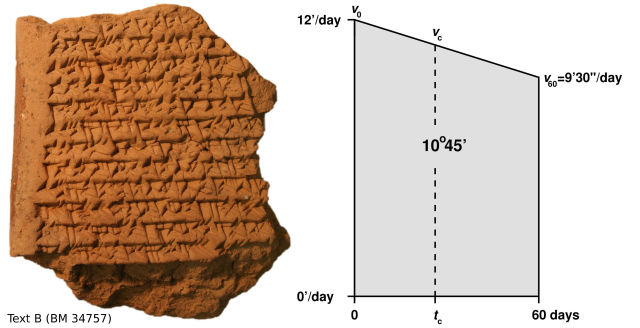Babylonians tracked Jupiter with sophisticated geometrical math
Ars Technica » Scientific Method 2016-01-29

(credit: Trustees of the British Museum/Mathieu Ossendrijver)
Even when a culture leaves behind extensive written records, it can be hard to understand their knowledge of technology and the natural world. Written records are often partial, and writers may have been unaware of some technology or simply considered it unremarkable. That's why the ancient world can still offer up surprises like the Antikythera Mechanism, an ancient mechanical computer that highlighted the Greeks' knowledge of math, astronomy, and the mechanical tech needed to tie them together.
It took several years after the discovery for the true nature of the Antikythera Mechanism to be understood. And now something similar has happened for the Babylonians. Clay tablets, sitting in the British Museum for decades, show that this culture was able to use sophisticated geometry to track the orbit of Jupiter, relying on methods that in some ways pre-figure the development of calculus centuries later.
We already knew that the Babylonians tracked the orbits of a variety of bodies. There are roughly 450 written tablets that describe the methods and calculations that we're aware of, and they date from 400 to 50 BCE. Most of the ones that describe how to calculate orbital motion, in the words of Humboldt University's Mathieu Ossendrijver, "can be represented as flow charts." Depending on the situation, they describe a series of additions, subtractions, and multiplications that could tell you where a given body would be.